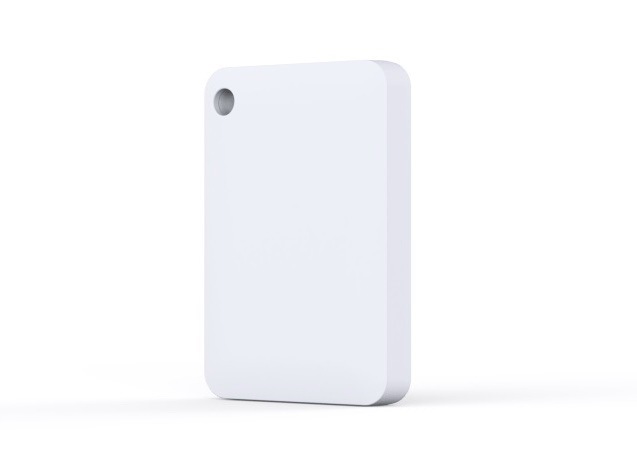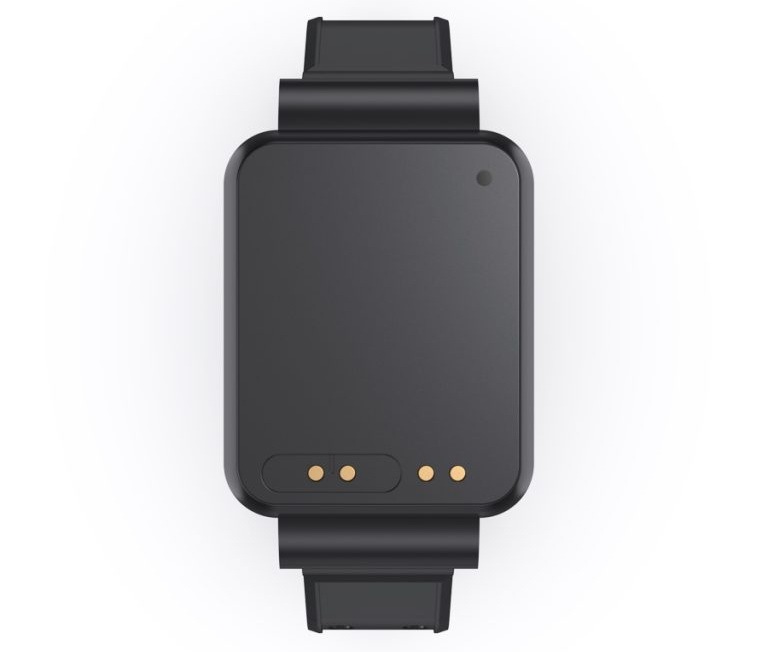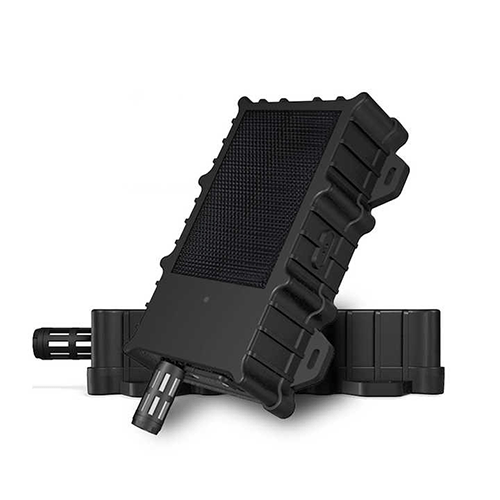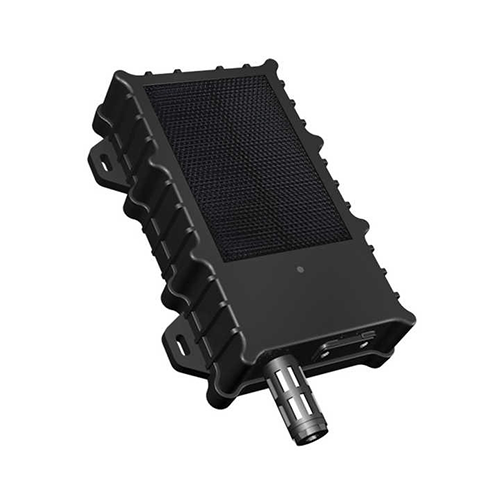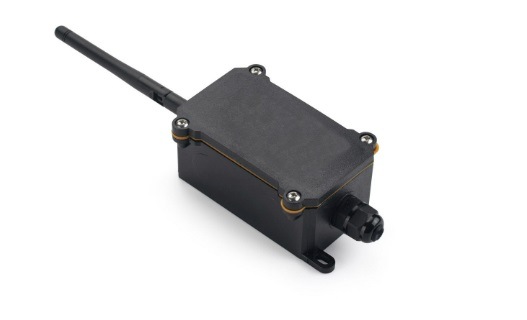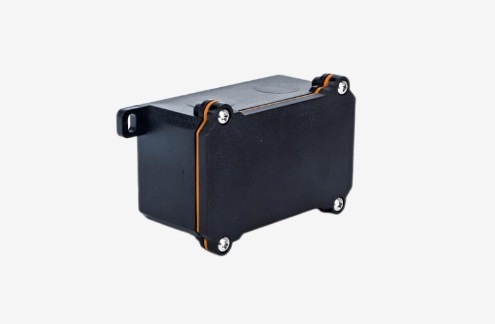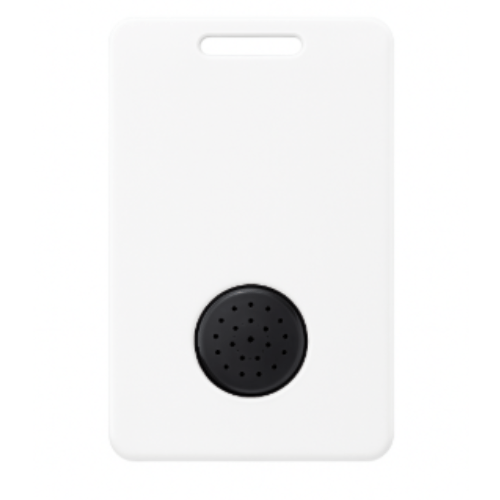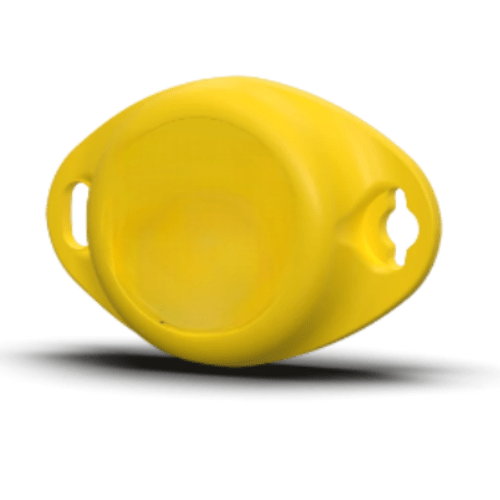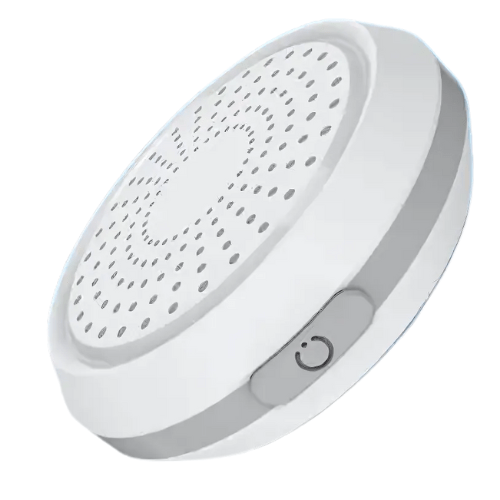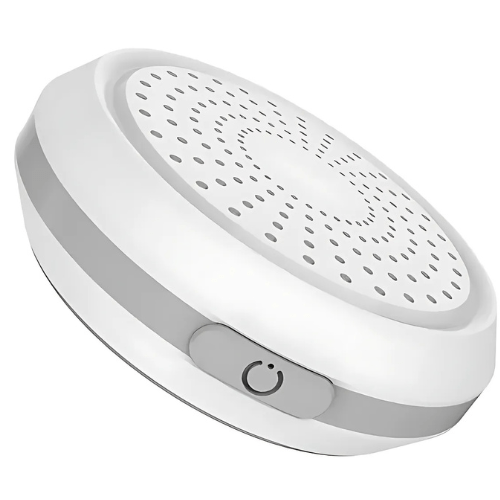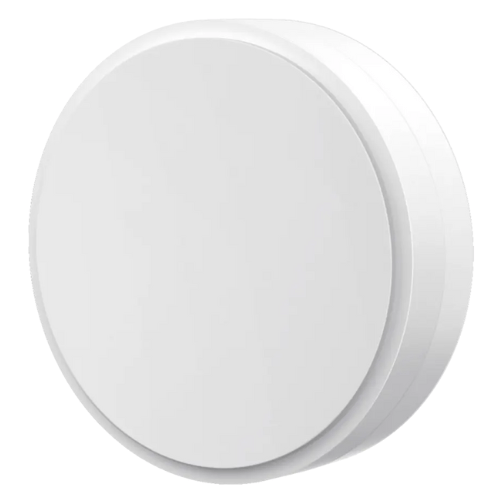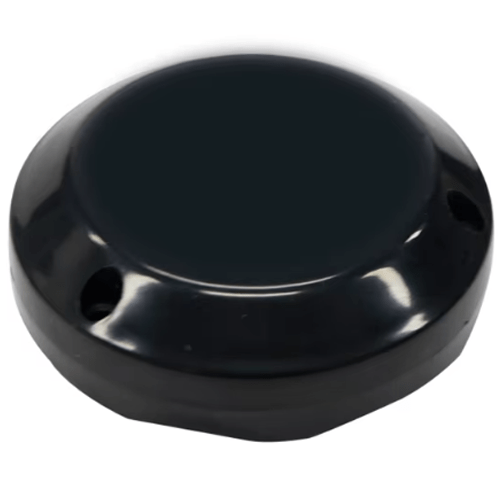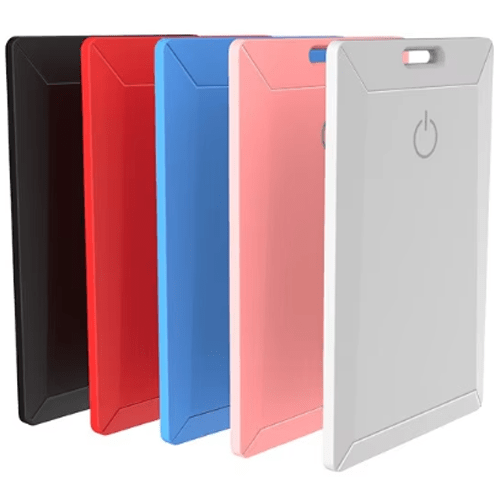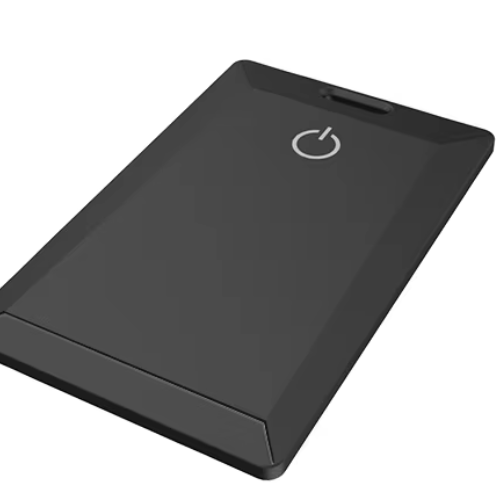Overview
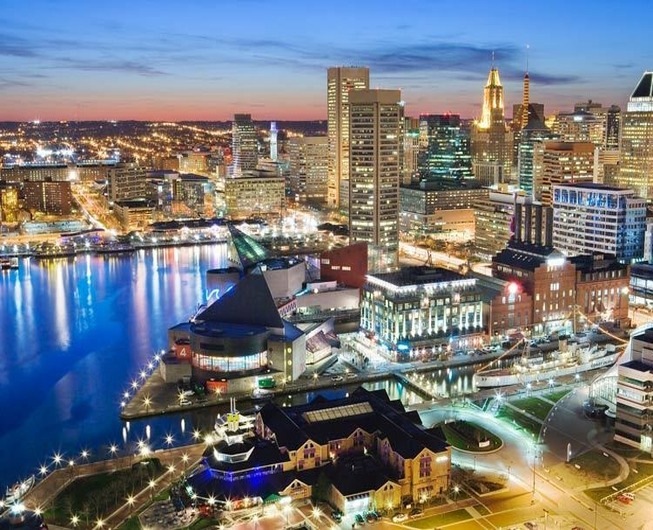
Baltimore–Columbia–Towson, MD MSA and its surrounding areas serve as a dynamic hub of economic activity, marked by its diverse industries and thriving business ecosystem. From healthcare and life sciences to manufacturing, logistics, and technology, the region showcases a robust industrial landscape that drives innovation and growth. Situated strategically with access to key transportation networks, this area fosters a conducive environment for businesses to flourish.
GAO RFID Inc., headquartered in New York City and Toronto, Canada, is among the top 10 global leaders in RFID, UHF RFID, NFC, BLE, and BLE Mesh solutions. We have worked extensively with various industries in Baltimore–Columbia–Towson, MD MSA and its surrounding areas, providing innovative RFID technology to streamline operations, enhance efficiency, and ensure seamless tracking and management solutions. Our projects span a wide array of applications, from inventory control in manufacturing to patient care in healthcare and fleet management in logistics.
With our cutting-edge products tailored to the region’s needs, we aim to empower businesses to achieve operational excellence. Explore how GAO RFID can help you overcome challenges and elevate your operations to new heights.
Related Products & Systems
Below are products and systems related to this webpage:
- BLE Gateways
- BLE Beacons
- RFID Readers by Feature
- RFID Readers by Frequency
- RFID Tags by Feature
- RFID Tags by Frequency
- RFID Systems
- People Tracking System
- Access Control System
- Asset Tracking System
- Parking Control System
Our products are in stock can be shipped to anywhere in continental U.S. or Canada from our local warehouse. To purchase or for any further information, please fill out this form or email us.
We are actively looking for partners who are like us located in the U.S. and Canada. For more information on partnering with GAO, please visit Partner with GAO RFID Inc. It lists various ways to partner with GAO, such as OEM Partnerships, Technology Integration, Distribution and Reselling Opportunities, Presenting at the Leading Event TekSummit, Joint R&D Projects, Training and Consulting Services, Industry-Specific Collaborations, Research and Academic Partnerships.
Baltimore–Columbia–Towson, MD MSA and Its Surrounding Areas
The Baltimore–Columbia–Towson, MD MSA and its surrounding areas encompass a vibrant metropolitan region steeped in history, culture, and innovation. This area, often referred to as the heart of Maryland, includes the cities of Baltimore, Columbia, Towson, and numerous suburbs, districts, and neighborhoods. It is a key economic, educational, and cultural hub for the Mid-Atlantic region, with its influence extending across the United States.
Geography and Municipal Structure
The metropolitan area consists of Baltimore City and several surrounding counties, including Baltimore County, Anne Arundel County, Howard County, Harford County, and Carroll County. Each area offers its own distinct flavor, from the bustling urban center of Baltimore to the suburban charm of Columbia and Towson. Notable neighborhoods within Baltimore City include Federal Hill, Fells Point, Canton, Hampden, and Mount Vernon, each celebrated for its unique character and history. Columbia, one of the country’s first planned communities, is an example of visionary urban design.
History and Cultural Significance
Baltimore, the region’s core, has a rich history dating back to its founding in 1729. It earned the nickname “Charm City” for its warm, welcoming atmosphere and rich cultural tapestry. Key landmarks such as Fort McHenry, where Francis Scott Key wrote “The Star-Spangled Banner,” highlight its historical importance. The area’s maritime heritage is preserved in the Inner Harbor, home to the USS Constellation and the National Aquarium.
The region’s culture is diverse, reflecting a blend of African American, European, and Asian influences. Annual events such as Artscape, the largest free arts festival in the U.S., showcase the area’s thriving creative community.
Education and Research
The Baltimore–Columbia–Towson area is renowned for its academic and research institutions. Johns Hopkins University, a global leader in medicine and research, has its main campus in Baltimore. The University of Maryland, Baltimore (UMB) and Morgan State University contribute significantly to the region’s educational landscape. These institutions attract talent and innovation, fostering partnerships with industries in health, technology, and manufacturing. GAO RFID has collaborated with such prestigious universities to deploy advanced tracking systems and streamline research operations.
Economy and Industries
This region boasts a diverse economy anchored by key industries such as healthcare, biotechnology, manufacturing, logistics, and education. Baltimore’s proximity to Washington, D.C., enhances its strategic importance for federal government agencies and contractors. Columbia and Towson are home to a growing technology and professional services sector.
For four decades, GAO RFID Inc., along with GAO Tek Inc. and GAO Research Inc., has supported these industries by delivering advanced RFID and BLE solutions. From asset tracking in manufacturing to patient monitoring in healthcare, we have empowered businesses and government agencies to optimize operations.
Transportation and Connectivity
Baltimore–Columbia–Towson is a transportation hub, benefiting from the convergence of major highways, railways, and seaports. The Port of Baltimore is a critical gateway for international trade, while Baltimore/Washington International Thurgood Marshall Airport (BWI) connects the region to the global market. Public transportation, including the Baltimore Metro Subway and MARC Train, enhances connectivity within the region and beyond.
GAO RFID’s technology has played a role in improving transportation logistics in the area. Our RFID-based solutions have streamlined operations for fleet management and enhanced inventory control at shipping and storage facilities.
Landmarks and Community Highlights
The region’s landmarks are as diverse as its communities. The Walters Art Museum, the Maryland Science Center, and Oriole Park at Camden Yards are just a few attractions that draw visitors and locals alike. Columbia’s Merriweather Post Pavilion is a premier destination for concerts and events, while Towson boasts a thriving retail and cultural scene.
These landmarks underscore the region’s blend of historical reverence and modern innovation. GAO RFID, through its tailored solutions, has supported local cultural institutions in enhancing visitor experience and ensuring the security of valuable assets.
Climate and Quality of Life
The area enjoys a humid subtropical climate, with mild winters and warm summers, making it an appealing place to live and work. Its mix of urban vibrancy, suburban tranquility, and scenic waterfronts offers a high quality of life.
GAO RFID’s presence in Baltimore–Columbia–Towson over the past four decades reflects our commitment to supporting the community. Whether it’s partnering with local businesses, academic institutions, or government agencies, we continue to play a vital role in driving innovation and efficiency in this dynamic region.
GAO RFID’s Technologies, Products, and Systems for Baltimore–Columbia–Towson, MD MSA
BLE and BLE Mesh
Bluetooth Low Energy (BLE) and BLE Mesh are wireless communication technologies optimized for low power consumption and long-range connectivity. BLE is commonly used for real-time personnel tracking and asset management, while BLE Mesh enables interconnected devices to form robust networks for building automation and smart city applications. GAO RFID’s BLE solutions enhance efficiency and security in industries such as healthcare, manufacturing, and logistics.
RFID and UHF RFID
Radio Frequency Identification (RFID) systems include Low Frequency (LF), High Frequency (HF), and Ultra-High Frequency (UHF) RFID technologies. LF RFID (125-134 kHz) is ideal for close-range applications like livestock tracking and access control. HF RFID (13.56 MHz), including NFC (Near Field Communication), excels in contactless payments, ID verification, and library systems. UHF RFID (300 MHz–3 GHz) offers longer read ranges, making it essential for inventory tracking, supply chain management, and vehicle identification.
Personnel Tracking and Asset Tracking
Personnel tracking systems utilize BLE, RFID, and NFC technologies to monitor staff and visitors, ensuring safety and productivity. Asset tracking solutions streamline inventory management, prevent loss, and improve resource allocation by offering real-time visibility into asset locations and statuses. GAO RFID’s technologies are instrumental for healthcare facilities, educational institutions, and manufacturing sites in the region.
Parking Systems and Access Control
Our parking management systems integrate UHF RFID, BLE, and HF RFID to enable seamless entry and exit, enhancing security and reducing congestion. GAO RFID’s access control solutions provide robust security for buildings, campuses, and industrial sites by leveraging RFID and NFC technologies for controlled access to sensitive areas.
Major Industries in Baltimore–Columbia–Towson, MD MSA and Its Surrounding Areas
- Healthcare and Life Sciences
- Education and Research
- Manufacturing
- Information Technology and Cybersecurity
- Logistics and Transportation
- Finance and Insurance
- Retail and Hospitality
- Construction and Real Estate
- Energy and Utilities
- Government and Public Administration
- Aerospace and Defense
- Creative Arts and Media
- Maritime and Port Operations
Healthcare and Life Sciences Industry in Baltimore–Columbia–Towson, MD MSA
The Healthcare and Life Sciences industry in Baltimore–Columbia–Towson, MD MSA and its surrounding areas is a pivotal part of the region’s economy, contributing significantly to both employment and economic growth. Known for its world-class research institutions, medical facilities, and pharmaceutical companies, this sector encompasses a wide range of activities, from healthcare delivery and medical device manufacturing to biotechnology research and pharmaceuticals. The region is a hub for cutting-edge innovations, particularly in Medical IoT (IoMT), asset tracking, RFID, and BLE technologies, which are transforming how care is delivered and improving patient outcomes.
Divisions of the Industry
- Healthcare Providers and Hospitals
In Baltimore–Columbia–Towson, MD MSA, a large portion of the healthcare industry revolves around hospitals, medical centers, and outpatient care. Leading medical institutions in the area, including those affiliated with major universities, are using RFID, asset tracking, and people tracking technologies to enhance patient care and operational efficiency. RFID and BLE systems are integral to real-time asset tracking, ensuring that vital equipment, such as medical devices, is available when needed. - Medical Device Manufacturing
The medical device manufacturing sector in Baltimore–Columbia–Towson, MD MSA is another crucial component of the region’s healthcare landscape. This sector leverages RFID, asset tracking, and BLE mesh systems to improve the traceability, quality control, and efficiency of medical device production. From tracking the location of raw materials to ensuring compliance with regulatory standards, RFID technology is key in streamlining operations and reducing the risk of errors. - Pharmaceuticals and Biotechnology
The pharmaceutical and biotechnology industry in the Baltimore–Columbia–Towson, MD MSA region is a major player in drug development and distribution. Companies in this sector rely heavily on asset tracking, RFID, and supply chain IoT solutions to ensure the safe and efficient transport of sensitive materials. The use of RFID in tracking pharmaceuticals ensures that drugs are delivered to the right locations at the right time while complying with regulatory requirements. - Research and Clinical Trials
Baltimore–Columbia–Towson, MD MSA is home to several prestigious research institutions and universities, including those focusing on medical research and clinical trials. Researchers and scientists utilize RFID and people tracking systems to improve participant safety, monitor conditions, and streamline data collection. These technologies help ensure that patients in clinical trials receive the correct medication and follow the prescribed protocol. - Healthcare IT and Services
The Healthcare IT and Services sector in the region includes companies that provide IT solutions for hospitals, clinics, and medical practitioners. These companies are increasingly adopting IoT and M2M solutions for monitoring and managing healthcare systems. From tracking patient data to managing hospital infrastructure, IoT systems play a vital role in ensuring the smooth operation of healthcare facilities.
Significance to the Region
The Healthcare and Life Sciences industry in Baltimore–Columbia–Towson, MD MSA is a critical part of the region’s economy, contributing billions of dollars annually. With its robust infrastructure for medical research and development, the region attracts major medical institutions, pharmaceutical companies, and biotechnology firms. The adoption of IoT technologies, such as RFID, BLE, and asset tracking, is transforming how healthcare is delivered, improving efficiency, patient safety, and the quality of care.
This industry is also a major driver of employment in the region, with numerous opportunities in healthcare management, medical research, pharmaceuticals, and medical device manufacturing. The integration of RFID and IoT technologies into healthcare systems is making Baltimore–Columbia–Towson, MD MSA a leader in medical innovation, ensuring that the region remains at the forefront of healthcare and life sciences advancements.
Major Players
Major players in the sector include prominent healthcare providers, medical research institutions, pharmaceutical giants, and medical device manufacturers, many of which rely on advanced technologies like RFID, BLE, and asset tracking to improve their operations. GAO RFID’s solutions play a critical role in supporting these organizations by enabling better asset management, improving workflow efficiency, and ensuring compliance with healthcare regulations.
GAO Case Studies
- Tracking Medical Equipment in a Hospital
A major healthcare provider used RFID and asset tracking solutions to monitor and manage its medical equipment, ensuring its availability and preventing loss or misplacement. - Streamlining Clinical Trials
A research institution utilized RFID and people tracking systems to ensure the safe handling of clinical trial materials, improving the efficiency of its research processes. - Supply Chain Management for Pharmaceuticals
A pharmaceutical distributor integrated RFID and BLE technologies into its supply chain management system, improving traceability and reducing the risk of counterfeit drugs. - Enhancing Security in Healthcare Facilities
A healthcare facility employed access control and people tracking systems to secure sensitive areas and enhance patient safety by ensuring that only authorized personnel had access to critical zones. - Improving Patient Safety through IoT Integration
A hospital integrated IoT sensors and RFID technology into its infrastructure to monitor patient health in real time, improving response times and outcomes.
Education and Research Industry in Baltimore–Columbia–Towson, MD MSA
The Education and Research industry in Baltimore–Columbia–Towson, MD MSA and its surrounding areas is a dynamic and multifaceted sector with a strong emphasis on innovation, research, and higher learning. The region is home to world-renowned universities, cutting-edge research centers, and a thriving ecosystem of educational institutions that foster the growth of intellectual capital and technological advancements. This sector is also deeply intertwined with industries such as healthcare, life sciences, technology, and public policy. As these institutions look to maintain their competitive edge, they increasingly adopt advanced technologies like RFID, BLE, asset tracking, and IoT solutions to streamline operations, improve security, and enhance research capabilities.
Divisions of the Industry
- Higher Education Institutions
Baltimore–Columbia–Towson, MD MSA boasts several prestigious universities, including Johns Hopkins University, the University of Maryland, and other notable research institutions. These universities are not only leaders in higher education but also critical hubs for groundbreaking research in fields like medicine, engineering, and environmental science. The integration of RFID and IoT solutions plays a crucial role in ensuring smooth campus operations, from asset management to campus security. - Research Institutions and Labs
The region is home to a wide array of research institutions, focusing on fields ranging from healthcare and biotechnology to environmental sciences and engineering. RFID, asset tracking, and BLE technologies are integral in these settings, where they improve the management of research assets, streamline the supply chain for lab materials, and ensure the secure handling of sensitive data. - Technology and Innovation Hubs
The Baltimore–Columbia–Towson area is also a growing center for technology companies and innovation hubs, where startups, research firms, and tech giants collaborate to push the boundaries of technological advancement. As part of the region’s commitment to fostering innovation, educational institutions and private sector companies alike are embracing Industrial IoT (IIoT), Manufacturing 4.0, and Smart Manufacturing solutions. These sectors benefit from RFID, asset tracking, and BLE mesh technologies, which optimize operational efficiency and enable real-time data analysis for continuous improvement. - K-12 Education
In addition to its strong higher education and research presence, Baltimore–Columbia–Towson, MD MSA is home to a network of K-12 schools that are increasingly adopting advanced technologies to enhance both learning and administrative efficiency. RFID and asset tracking solutions are widely implemented to manage school supplies, textbooks, and equipment, reducing losses and improving resource allocation. - Government and Policy Research
Government agencies and think tanks in Baltimore–Columbia–Towson, MD MSA conduct extensive research on public policy, environmental issues, and urban development. These organizations benefit from the integration of RFID and IoT technologies for tracking data, assets, and even personnel during field research. The application of IoT solutions like RFID and BLE technologies helps streamline data collection, manage resources more efficiently, and ensure secure transmission of sensitive research findings.
Significance to the Region
The Education and Research sector in Baltimore–Columbia–Towson, MD MSA is an essential component of the region’s economy, attracting top talent, driving technological advancements, and fostering innovation. With its strong educational institutions and research centers, the region is positioned as a leader in sectors ranging from healthcare to technology and public policy.
The incorporation of RFID, BLE, and IoT solutions is helping these institutions manage assets, improve operational workflows, and enhance security. As a result, educational and research institutions are able to devote more resources to pushing the boundaries of knowledge, conducting critical research, and preparing the next generation of leaders.
The region’s academic and research ecosystem attracts major players from both the public and private sectors, including leading universities, government agencies, and research institutions. The adoption of cutting-edge technologies such as RFID, asset tracking, and IoT has made the region one of the most advanced hubs for research and education in the U.S., driving growth and innovation across numerous industries. GAO RFID’s innovative products support these institutions by providing robust solutions that meet their asset tracking, security, and operational needs.
GAO Case Studies
- Improving Asset Management in a University Research Lab
A university research lab used RFID and asset tracking to streamline the management of research equipment, reducing downtime and ensuring resources were always available. - Enhancing Campus Security with RFID Technology
A major university implemented access control systems powered by RFID to secure sensitive areas, improving safety and controlling access for staff and students. - Optimizing K-12 School Supply Management
A school district used RFID and asset tracking technologies to monitor and manage classroom resources and supplies, reducing waste and improving allocation. - Enabling Real-Time Data Collection for Government Research
A government research agency integrated people tracking and asset management solutions to monitor field operations, improving research accuracy and data integrity. - Streamlining the Development Process in a Technology Hub
A technology startup used BLE mesh and RFID solutions to optimize their manufacturing processes and enable real-time monitoring of production, enhancing efficiency and reducing errors.
Manufacturing Industry in Baltimore–Columbia–Towson, MD MSA
The manufacturing industry in Baltimore–Columbia–Towson, MD MSA and its surrounding areas plays a pivotal role in the region’s economy, encompassing a wide range of sectors such as industrial machinery, electronics, chemicals, pharmaceuticals, and advanced materials. This industry thrives due to its rich industrial heritage, a highly skilled workforce, and proximity to major transportation hubs, which facilitate both the supply of raw materials and the distribution of finished goods. The integration of smart technologies such as RFID, BLE, asset tracking, and IoT is revolutionizing the way manufacturers operate, enabling increased efficiency, security, and real-time data analysis.
Divisions of the Manufacturing Industry
- Industrial Machinery and Equipment Manufacturing
Industrial machinery manufacturing is one of the largest sectors in Baltimore–Columbia–Towson, MD MSA, driven by a mix of traditional manufacturing processes and cutting-edge smart technologies. With the rise of Industry 4.0 and Smart Manufacturing, manufacturers in the region are increasingly turning to solutions like RFID and asset tracking systems to monitor machinery and components throughout their lifecycle. - Electronics Manufacturing
Electronics manufacturing is another thriving sector in the Baltimore–Columbia–Towson region, with a focus on consumer electronics, semiconductor devices, and advanced communication systems. To ensure the highest levels of quality and minimize production delays, manufacturers are increasingly adopting RFID and NFC technologies to track components and monitor product assembly processes. - Pharmaceutical and Biotech Manufacturing
The pharmaceutical and biotechnology sectors in Baltimore–Columbia–Towson, MD MSA are essential contributors to the region’s manufacturing landscape. These industries are highly regulated and require precision in managing inventory, tracking raw materials, and ensuring compliance with various standards. - Chemical Manufacturing
Chemical manufacturing, which includes the production of everything from industrial chemicals to consumer products, benefits significantly from RFID and asset tracking technologies. In Baltimore–Columbia–Towson, MD MSA, the chemical manufacturing sector has increasingly embraced automation and digitalization as part of Smart Manufacturing initiatives. RFID is used to track chemicals and hazardous materials, ensuring safety and preventing losses. - Aerospace and Defense Manufacturing
The aerospace and defense industry is a key player in Baltimore–Columbia–Towson, MD MSA’s manufacturing landscape, with companies focusing on the development of cutting-edge technologies such as aircraft, spacecraft, and defense systems. The precision required in aerospace manufacturing makes real-time asset management and data collection critical, and RFID technology is integral to meeting these demands.
Significance to the Region
The manufacturing industry in Baltimore–Columbia–Towson, MD MSA is a cornerstone of the region’s economy, contributing to job creation, innovation, and economic growth. The adoption of smart manufacturing technologies, including RFID, BLE, and IoT solutions, is transforming the industry, allowing manufacturers to operate with greater precision and efficiency.
The region’s manufacturing sector benefits from a skilled workforce, advanced infrastructure, and a collaborative environment where educational institutions, research centers, and private companies come together to push the boundaries of innovation. By embracing these technologies, manufacturers in the region can improve productivity, reduce waste, and enhance safety, ensuring that Baltimore–Columbia–Towson remains a leader in the global manufacturing landscape.
GAO RFID provides manufacturing companies in the region with the cutting-edge RFID, BLE, asset tracking, and people tracking solutions necessary to streamline operations, optimize supply chains, and enhance security. With a long-standing reputation for quality and innovation, GAO RFID continues to support manufacturers in achieving their goals, ensuring their competitive advantage in an increasingly complex and fast-paced global market.
GAO Case Studies
- Enhancing Inventory Management in a Manufacturing Facility
A large manufacturing plant integrated RFID and asset tracking solutions to optimize their inventory management processes, reducing stockouts and improving production efficiency. - Improving Equipment Monitoring in Aerospace Production
Aerospace manufacturers adopted people tracking and RFID solutions to ensure the proper handling and maintenance of high-value equipment, minimizing errors and delays in production. - Streamlining Pharmaceutical Supply Chain Operations
A pharmaceutical manufacturer used RFID and IoT to monitor the movement and storage conditions of sensitive materials, ensuring compliance with safety regulations and improving supply chain visibility. - Increasing Efficiency in Chemical Manufacturing
A chemical manufacturing company implemented RFID and asset tracking to track hazardous materials and ensure real-time condition monitoring, enhancing safety and operational efficiency. - Optimizing Electronics Assembly Line with BLE Mesh
An electronics manufacturer used BLE mesh technology to enable seamless communication across their assembly line, improving production speeds and reducing downtime.
Information Technology and Cybersecurity Industry in Baltimore–Columbia–Towson, MD MSA
The Information Technology (IT) and Cybersecurity industry in Baltimore–Columbia–Towson, MD MSA and its surrounding areas is a vital part of the region’s economic infrastructure. As a hub for innovation, the region boasts a diverse ecosystem of technology companies focused on software development, data analytics, cloud computing, and most critically, cybersecurity. The increasing reliance on interconnected devices, cloud services, and critical infrastructure has made cybersecurity a key component of the area’s IT industry, ensuring that systems and sensitive data remain secure from threats.
Divisions of the IT and Cybersecurity Industry
- Cybersecurity Solutions
The growth of digital transformation and the rise of IoT have significantly increased the demand for robust cybersecurity solutions in the Baltimore–Columbia–Towson region. Organizations are seeking cutting-edge technologies to protect their networks, sensitive data, and operational systems from malicious attacks. This includes securing everything from enterprise networks to connected devices in smart homes, smart cities, and industrial environments. - Cloud Computing and Data Management
The cloud computing sector in the Baltimore–Columbia–Towson region is flourishing, with companies adopting cloud-based platforms to streamline operations and enhance collaboration. IoT integration with cloud systems has created a dynamic shift in how data is collected, stored, and analyzed. This transformation has made cybersecurity even more critical, as cloud systems become potential targets for cyberattacks. - Enterprise Software Development and IT Services
Baltimore–Columbia–Towson, MD MSA has a strong presence of companies offering IT services and custom software development to meet the diverse needs of various industries, including government, finance, healthcare, and manufacturing. These services range from providing enterprise resource planning (ERP) solutions to developing advanced automation systems for businesses. - Telecommunications and Networking
The telecommunications industry in Baltimore–Columbia–Towson, MD MSA is thriving with a focus on enhancing broadband infrastructure, mobile connectivity, and network security. As 5G and IoT devices proliferate, the need for secure and reliable communication networks has never been greater. To manage these systems efficiently, RFID and BLE technologies are used for network monitoring and equipment management. - Government and Defense Cybersecurity
Baltimore–Columbia–Towson, MD MSA is home to several government agencies, defense contractors, and research organizations that prioritize robust cybersecurity measures to protect national security and critical infrastructure. The region’s strategic proximity to Washington D.C. and federal agencies drives innovation and research in cybersecurity, fostering collaborations aimed at developing next-generation defense technologies.
Significance to the Region
The IT and cybersecurity industries in Baltimore–Columbia–Towson, MD MSA and its surrounding areas are crucial for supporting a wide range of sectors, from government agencies to private enterprises. The integration of advanced technologies, including RFID, BLE, and asset tracking, is transforming how businesses and government agencies handle everything from security to resource management. The region’s strong commitment to fostering innovation in these fields is helping businesses stay secure and competitive in a digital-first world.
The growing importance of IoT, Industrial IoT, and Smart Cities initiatives has further emphasized the need for integrated, secure solutions across industries. As a result, cybersecurity solutions, particularly those that incorporate RFID, BLE mesh, and NFC, are central to the ongoing success of this sector.
Major Players
GAO RFID plays a critical role in providing the IT and cybersecurity industries in the region with innovative solutions that safeguard assets, people, and data. Our RFID, asset tracking, people tracking, and access control technologies are at the forefront of supporting cybersecurity efforts, contributing to the overall success and security of businesses and government entities.
GAO Case Studies
- Securing Access in a Data Center
A major data center operator implemented an RFID-based access control system to restrict entry to sensitive areas, enhancing physical security and ensuring compliance with industry standards. - Improving Inventory Management for a Telecom Provider
A telecom company integrated RFID and asset tracking systems to monitor their equipment in real time, reducing losses and ensuring timely maintenance. - Streamlining Asset Management in a Smart Office
A corporate office implemented BLE mesh and RFID technologies to streamline asset management and optimize office operations, improving employee productivity. - Enhancing Cybersecurity with People Tracking
A government contractor deployed people tracking and access control technologies to ensure that only authorized personnel accessed high-security locations, reinforcing their cybersecurity measures. - Optimizing Supply Chain for a Manufacturing Company
A manufacturing company adopted asset tracking and RFID solutions to track raw materials and finished products, improving supply chain efficiency and security.
Logistics and Transportation Industry in Baltimore–Columbia–Towson, MD MSA
The logistics and transportation industry in the Baltimore–Columbia–Towson, MD MSA and its surrounding areas plays a pivotal role in ensuring the smooth flow of goods and services throughout the region and beyond. This sector supports a vast network of companies involved in freight, warehousing, distribution, supply chain management, and transportation services. Given its strategic location near major ports, highways, and railroads, the region is a critical hub for domestic and international trade. The industry encompasses multiple divisions, each contributing to the overall efficiency of the transportation ecosystem.
Divisions of the Logistics and Transportation Industry
- Transportation and Freight Services
In the Baltimore–Columbia–Towson region, transportation and freight services are foundational to the smooth movement of goods. This division includes shipping, trucking, rail, and air transport, with companies leveraging advanced technology to optimize logistics operations. From road transport to container shipping, real-time tracking and management of assets are essential to maintaining supply chain efficiency. - Warehousing and Distribution
Warehousing and distribution services are a key component of the logistics industry, facilitating the storage and movement of goods between producers, retailers, and consumers. As e-commerce and just-in-time inventory systems continue to grow, warehouses rely on advanced automation and tracking technologies to manage goods effectively and reduce operational costs. - Fleet Management
Fleet management is a critical segment of the logistics industry, especially for companies managing large vehicle fleets. Efficient fleet management ensures that vehicles are maintained properly, routes are optimized, and drivers adhere to safety regulations. As the region’s transportation infrastructure continues to modernize, companies are turning to IoT and M2M technologies to manage their fleets. - Smart Cities and Connected Infrastructure
As part of the broader trend of Smart Cities, the logistics industry in Baltimore–Columbia–Towson is embracing connected technologies to improve transportation efficiency. From smart parking systems that allow vehicles to find available spaces easily to connected vehicles (V2X) that communicate with each other and infrastructure for better safety and traffic management, the region is leveraging advanced IoT solutions to reduce congestion and improve mobility. - Supply Chain and Logistics IoT
Supply chain management is a key focus for many companies in the Baltimore–Columbia–Towson area, with businesses increasingly adopting IoT solutions to optimize their supply chain operations. This division of the logistics industry involves real-time tracking of goods, warehouses, and vehicles across the entire supply chain, ensuring that everything moves efficiently and without delay.
Significance to the Region
The logistics and transportation industry is a major driver of economic growth in the Baltimore–Columbia–Towson, MD MSA. With its strategic location, the region serves as a hub for trade, distribution, and transportation services, facilitating the movement of goods both domestically and internationally. The adoption of advanced technologies, such as RFID, BLE, and IoT, is helping companies streamline operations, improve efficiency, and reduce costs across all divisions of the industry.
The increasing demand for Smart Cities, connected vehicles (V2X), and supply chain IoT technologies ensures that the logistics and transportation sector will continue to evolve. Companies in the region are adopting cutting-edge solutions to manage assets, track shipments, and optimize fleet performance. As a leader in providing RFID and BLE technologies, GAO RFID supports these innovations, helping businesses maintain efficient and secure operations.
GAO Case Studies
- Optimizing Freight Tracking for a Large Logistics Provider
A large logistics provider implemented an integrated RFID and BLE system to track freight from warehouses to end destinations, improving real-time visibility and reducing delays. - Enhancing Fleet Management for a Delivery Service
A delivery service company adopted asset tracking and people tracking solutions to monitor the condition and location of its fleet, optimizing routes and reducing maintenance costs. - Improving Warehouse Efficiency with Real-Time Location Systems
A warehouse integrated RFID and BLE mesh technologies to automate inventory management, ensuring products were stored and retrieved more efficiently. - Smart Parking Implementation for a Public Transit System
A public transit system implemented RFID and NFC technology to streamline parking management, allowing vehicles to easily locate available spaces and improve traffic flow. - Enhancing Supply Chain Security for a Retail Company
A retail company utilized asset tracking and people tracking technologies to monitor high-value inventory throughout its supply chain, ensuring goods were securely handled at every step.
Finance and Insurance Industry in Baltimore–Columbia–Towson, MD MSA
The finance and insurance industry in the Baltimore–Columbia–Towson, MD MSA and its surrounding areas plays a crucial role in the regional economy, providing essential services that support both individual and corporate financial health. As the financial hub for the region, it encompasses various sectors, including banking, insurance, investment services, and fintech innovations. The adoption of technology, including IoT and RFID-based solutions, is shaping the future of this industry, driving operational efficiency, enhancing security, and improving customer service.
Divisions of the Finance and Insurance Industry
- Banking and Financial Services
The banking sector in the Baltimore–Columbia–Towson region is dynamic, with both traditional banks and newer fintech companies offering a wide range of services, such as retail banking, investment advice, and loans. As the industry continues to digitize, banks are incorporating advanced technologies to streamline operations and improve customer experiences. - Insurance Services
The insurance industry, encompassing life, health, property, and casualty sectors, is another major player in the region’s economy. With the growing demand for personalized services, insurers are increasingly leveraging technology to improve claims processing, underwriting, and customer relations. - Investment and Wealth Management
Wealth management firms and investment advisors in the Baltimore–Columbia–Towson region focus on providing high-net-worth individuals and institutions with tailored financial advice and strategies. The industry is embracing IoT and M2M technology to improve client services and enhance investment tracking. - Fintech and Digital Payments
The rise of fintech companies in the Baltimore–Columbia–Towson region is transforming the way financial services are provided, particularly in digital payments and blockchain technologies. These companies are at the forefront of integrating cutting-edge technologies into financial services, offering innovative solutions to meet the needs of a rapidly changing market. - Cybersecurity and Data Protection
Cybersecurity is a critical concern for financial institutions, especially as they handle sensitive personal and financial data. The finance and insurance industry in the Baltimore–Columbia–Towson region invests heavily in cybersecurity to protect against hacking, fraud, and data breaches.
Significance to the Region
The finance and insurance industry is a cornerstone of economic growth in the Baltimore–Columbia–Towson, MD MSA. It supports a wide range of businesses and individuals, helping to drive the region’s prosperity. The industry is also highly competitive, with numerous major players, including national banks, investment firms, insurance companies, and fintech startups.
Adopting innovative technologies is critical to staying ahead of competitors and addressing the evolving needs of customers. Solutions like RFID, BLE, and asset tracking are essential in enhancing operational efficiency, security, and customer satisfaction. The growing emphasis on Smart Cities and IoT also presents new opportunities for integrating financial services with connected infrastructures, offering seamless payment solutions, asset management, and real-time tracking.
In this rapidly evolving industry, GAO RFID’s advanced technologies, such as RFID, NFC, asset tracking, and people tracking, help businesses in the finance and insurance sectors in the Baltimore–Columbia–Towson region stay competitive, secure, and efficient.
GAO Case Studies
- Enhancing Bank Security with Real-Time Access Control
A major bank in the region implemented RFID-based access control systems to ensure that sensitive areas of their branches were securely restricted to authorized personnel, improving overall security. - Tracking High-Value Assets for Insurance Coverage
An insurance company utilized asset tracking and people tracking solutions to more accurately manage and assess claims for high-value assets, reducing fraud and improving operational efficiency. - Improving Wealth Management with Asset Tracking Solutions
A wealth management firm adopted RFID and BLE mesh technologies to track high-value assets, providing clients with real-time visibility and protection of their investments. - Optimizing Digital Payments for a Fintech Startup
A fintech company integrated NFC and BLE technologies to enhance their mobile payment platform, providing a secure and convenient payment solution for users across various sectors. - Strengthening Cybersecurity with RFID and People Tracking
A financial institution deployed RFID and people tracking systems to enhance their cybersecurity protocols, ensuring that only authorized personnel had access to critical data and infrastructure.
Retail and Hospitality Industry in Baltimore–Columbia–Towson, MD MSA
The retail and hospitality industries in the Baltimore–Columbia–Towson, MD MSA and its surrounding areas are major contributors to the local economy, driving both consumer engagement and tourism. These sectors encompass a diverse range of businesses, including retail stores, hotels, restaurants, and entertainment venues, all of which rely heavily on customer satisfaction, operational efficiency, and effective management of assets and resources.
Divisions of the Retail and Hospitality Industry
- Retail Sector
The retail sector in Baltimore–Columbia–Towson, MD MSA is a dynamic and competitive industry, with a combination of traditional brick-and-mortar stores and a growing number of e-commerce platforms. Retailers are increasingly adopting innovative technologies to streamline operations, optimize supply chains, and enhance the customer experience. - Hospitality and Tourism
The hospitality and tourism sector is a significant pillar of the economy in Baltimore–Columbia–Towson, MD MSA. From luxury hotels to regional attractions, the demand for high-quality services continues to grow. Technology adoption in hospitality has been crucial in meeting the needs of increasingly tech-savvy consumers while improving operational efficiency. - Restaurants and Foodservice
Restaurants and foodservice establishments in Baltimore–Columbia–Towson, MD MSA are diverse, ranging from casual dining to fine dining and fast-food chains. As consumer preferences evolve, these businesses are turning to advanced technologies to improve food safety, streamline operations, and enhance customer service. - Entertainment Venues and Sports
The entertainment and sports sectors, including stadiums, concert halls, and arenas in the Baltimore–Columbia–Towson region, are rapidly adopting technology to enhance customer experiences and improve operational efficiency. Technologies such as RFID for ticketing and NFC for contactless payments are increasingly used to ensure seamless access and secure transactions at events. - Shopping Centers and Malls
Shopping malls and centers are increasingly using technology to adapt to shifting consumer behavior, with a focus on improving foot traffic, customer engagement, and overall experience. By leveraging BLE mesh technology and RFID for asset tracking, these venues can offer personalized experiences to shoppers based on their location within the mall and ensure real-time inventory accuracy.
Significance to the Region
The retail and hospitality industries are central to the economy of Baltimore–Columbia–Towson, MD MSA, providing a wide range of employment opportunities and driving significant consumer spending. These sectors are also highly competitive, with businesses constantly seeking innovative solutions to differentiate themselves and improve operational efficiency.
As the region continues to grow, embracing IoT solutions like RFID, asset tracking, and people tracking is crucial for businesses to stay competitive. These technologies help businesses in retail, hospitality, and entertainment improve security, streamline operations, and enhance the customer experience, contributing to the overall economic vitality of the region.
GAO RFID’s comprehensive suite of RFID, BLE, NFC, and asset tracking solutions supports businesses in these sectors by enhancing operational efficiency, customer service, and security.
GAO Case Studies
- Optimizing Retail Inventory Management
A large retail chain in the region implemented RFID and asset tracking systems to improve inventory accuracy and reduce stockouts, resulting in higher sales and improved customer satisfaction. - Enhancing Hotel Guest Experience with Access Control
A luxury hotel used RFID-based access control and people tracking to streamline check-ins, reduce wait times, and ensure that guests had a seamless experience from arrival to departure. - Tracking Food Inventory in Restaurants
A chain of restaurants deployed RFID-based asset tracking to monitor food inventory and ensure product quality, reducing food waste and ensuring fresher ingredients for customers. - Improving Event Management at an Entertainment Venue
An entertainment venue utilized RFID for ticketing and asset tracking for managing event equipment and merchandise, improving efficiency and ensuring smooth operations during large events. - Streamlining Parking Management at a Shopping Mall
A major shopping mall integrated parking system control and asset tracking to optimize parking space availability and ensure that shoppers had a seamless experience, improving customer satisfaction.
Construction and Real Estate Industry in Baltimore–Columbia–Towson, MD MSA
The construction and real estate sectors in the Baltimore–Columbia–Towson, MD MSA and its surrounding areas are key drivers of economic growth, providing employment and facilitating urban development. With a rapidly expanding population and a diverse range of residential, commercial, and industrial projects, these industries are integral to the region’s infrastructure and overall development.
Divisions of the Construction and Real Estate Industry
- Residential Real Estate
The residential real estate market in Baltimore–Columbia–Towson, MD MSA is dynamic, with a growing demand for both single-family homes and multi-unit dwellings. Developers and construction firms in the region focus on meeting this demand by constructing new homes and residential complexes. Technological advancements, such as asset tracking and people tracking, are crucial for managing construction equipment and personnel on job sites, helping to streamline project timelines and ensure resource availability. - Commercial Real Estate
The commercial real estate market in Baltimore–Columbia–Towson, MD MSA is robust, with a mix of office buildings, retail spaces, and industrial complexes. As the demand for office and retail spaces continues to evolve, the integration of smart building technologies is becoming increasingly important. Building management systems (BMS) that utilize IoT solutions are helping property managers optimize energy use, improve security, and enhance tenant comfort. - Industrial Real Estate and Warehousing
Industrial real estate is a growing sector in Baltimore–Columbia–Towson, MD MSA, driven by the demand for warehouses, distribution centers, and manufacturing facilities. As companies look to streamline their supply chains and improve operational efficiency, the integration of IoT and RFID technologies has become essential. - Construction and Infrastructure Development
Construction projects in the Baltimore–Columbia–Towson, MD MSA are growing in scope and complexity, with a focus on both new development and renovation of existing infrastructure. Large-scale construction projects, such as highways, bridges, and public facilities, benefit from advanced technologies that can improve efficiency, safety, and resource management. - Property Management and Facility Services
Property management and facility services are integral to the upkeep and operational efficiency of both residential and commercial properties in Baltimore–Columbia–Towson, MD MSA. Technology solutions such as RFID, asset tracking, and access control play a key role in improving management operations and ensuring that facilities are well-maintained.
Significance to the Region
The construction and real estate industries are critical to the economic development of the Baltimore–Columbia–Towson, MD MSA. These sectors not only provide essential infrastructure but also create jobs, attract investments, and contribute to the overall growth of the region. As the demand for both residential and commercial properties continues to rise, innovative technologies are enabling companies in these sectors to increase productivity, improve security, and streamline operations.
Technologies such as RFID, BLE, and IoT are playing a pivotal role in transforming the construction and real estate landscape by providing real-time data and insights into asset management, personnel tracking, and operational efficiency. These advancements help companies meet the increasing demands of urban development while minimizing costs and maximizing resource utilization.
Major Players
GAO RFID’s range of asset tracking, people tracking, access control, and parking system control solutions can assist construction and real estate firms in the Baltimore–Columbia–Towson region by offering state-of-the-art technologies to enhance security, operational efficiency, and project delivery timelines.
GAO Case Studies
- Optimizing Construction Equipment Management
A construction firm used RFID-based asset tracking to monitor equipment and tools across multiple job sites, improving equipment utilization and reducing losses. - Streamlining Commercial Property Access
A commercial building implemented NFC-based access control and people tracking to enhance tenant access and improve building security, ensuring a smooth flow of personnel. - Improving Warehouse Inventory Tracking
A large warehousing company deployed RFID-based inventory management and asset tracking to enhance supply chain efficiency and reduce operational downtime. - Enhancing Safety and Efficiency on Construction Sites
A construction company used RFID and people tracking technologies to monitor worker safety, ensuring compliance with safety standards and improving resource allocation. - Managing Parking for Large Development Projects
A real estate developer implemented parking system control and asset tracking to manage parking spaces and equipment on a large-scale construction site, improving site organization and reducing congestion.
Energy and Utilities Industry in Baltimore–Columbia–Towson, MD MSA
The energy and utilities industry in the Baltimore–Columbia–Towson, MD MSA and its surrounding areas plays a crucial role in powering the region’s economic growth and maintaining quality of life. This sector includes the production, distribution, and management of electricity, gas, and water, as well as the development of sustainable energy solutions, such as renewable energy and energy storage systems. As the demand for energy continues to grow and as sustainability becomes a priority, the integration of advanced technologies, including IoT, RFID, and BLE, is transforming how utilities manage their infrastructure and services.
Divisions of the Energy and Utilities Industry
- Power Generation and Distribution
Power generation is a key component of the energy sector, and in the Baltimore–Columbia–Towson, MD MSA, a mix of traditional energy sources, including natural gas and coal, along with a growing focus on renewable energy, is shaping the region’s energy landscape. Smart grids are revolutionizing the way electricity is generated, stored, and distributed, enabling utilities to optimize energy consumption and improve the reliability of power delivery. - Water and Wastewater Management
The water and wastewater management division is a critical part of the utilities sector, ensuring that the region’s residents and industries have access to clean water while managing waste. As environmental concerns grow, the need for more efficient water management practices is driving innovation. - Natural Gas Distribution
Natural gas distribution is another major part of the energy sector, providing energy to homes and businesses. This division involves the management of pipelines, storage facilities, and pressure regulation stations, which requires robust monitoring systems to ensure safe and efficient operation. - Renewable Energy and Sustainability
The drive toward sustainability has led to an increasing focus on renewable energy in the Baltimore–Columbia–Towson, MD MSA. Solar, wind, and other renewable energy sources are being incorporated into the regional energy grid, creating new challenges in energy management and distribution. - Energy Efficiency and Demand Response
Energy efficiency programs and demand response initiatives are growing areas within the energy sector, as utilities strive to optimize energy usage and reduce environmental impact. Energy management IoT solutions are being used to monitor energy consumption in real-time, enabling businesses and consumers to reduce their energy footprint.
Significance to the Region
The energy and utilities industry is fundamental to the economic and environmental well-being of the Baltimore–Columbia–Towson, MD MSA. With the region’s population growing and the demand for energy and water services increasing, the need for advanced, efficient technologies is critical. Moreover, sustainability initiatives are increasingly important as the region transitions to renewable energy sources and seeks to reduce its carbon footprint.
Technologies like IoT, RFID, BLE, and energy management IoT are transforming the way utilities operate by providing real-time monitoring, improving resource management, and enabling predictive maintenance. These advancements ensure that energy and utilities companies can meet the growing demand while also maintaining safety, sustainability, and cost efficiency.
Major Players
GAO RFID’s asset tracking, people tracking, energy management IoT, and RFID-based access control solutions are helping energy and utility companies in the region streamline their operations, reduce downtime, and enhance overall efficiency.
GAO Case Studies
- Tracking and Managing Power Generation Assets
A utility company used RFID and asset tracking systems to monitor equipment at a power plant, improving maintenance schedules and reducing equipment downtime. - Monitoring Water Distribution Infrastructure
A water utility implemented IoT-based asset tracking to monitor the condition of pipes and pumps, enabling them to proactively address maintenance issues and prevent water losses. - Enhancing Gas Pipeline Safety
A natural gas distributor deployed people tracking and asset tracking technologies to ensure that workers were in safe areas and equipment was properly maintained along the pipeline. - Optimizing Energy Use in Smart Buildings
A commercial property owner implemented energy management IoT and people tracking solutions to optimize lighting and HVAC systems based on occupancy, reducing energy consumption and improving efficiency. - Integrating Renewable Energy into the Grid
A utility company used RFID and smart grid technologies to integrate renewable energy sources into the existing grid, optimizing energy storage and distribution.
Government and Public Administration Industry in Baltimore–Columbia–Towson, MD MSA
The Government and Public Administration industry in the Baltimore–Columbia–Towson, MD MSA plays a pivotal role in shaping public policies, delivering services, and ensuring the safety and well-being of the community. The sector encompasses a range of services including law enforcement, public health, infrastructure development, and governmental support services, and is increasingly embracing advanced technologies such as IoT, RFID, and BLE to streamline operations, ensure safety, and improve citizen engagement.
Divisions of the Government and Public Administration Industry
- Public Safety and Emergency Response
Public safety and emergency response services in the Baltimore–Columbia–Towson, MD MSA rely heavily on coordination between different government agencies to provide rapid responses in times of crisis. As the demand for more efficient emergency services grows, the integration of IoT and RFID technologies is crucial to improving the responsiveness and safety of first responders. - Law Enforcement and Security
Law enforcement agencies in the Baltimore–Columbia–Towson, MD MSA use a variety of technologies to support investigations, track criminal activity, and maintain public order. RFID and BLE mesh networks can improve asset management and tracking for police vehicles, uniforms, and equipment. NFC technologies are also used for secure identity verification, ensuring that only authorized personnel can access restricted areas. - Healthcare and Public Health Services
Public health agencies within the Baltimore–Columbia–Towson, MD MSA focus on delivering healthcare services to the community, monitoring outbreaks, and ensuring public health safety. Technologies like RFID and IoT can enhance patient tracking and monitoring, providing real-time information about patient conditions, equipment usage, and the location of medical personnel. - Infrastructure and Urban Planning
Infrastructure development and urban planning in the Baltimore–Columbia–Towson, MD MSA are critical for accommodating the region’s growing population and improving quality of life. Smart infrastructure solutions are increasingly leveraging IoT, RFID, and asset tracking systems to monitor and manage public infrastructure like roads, bridges, and utilities. - Public Administration and Governance
Public administration involves the management and coordination of government operations, services, and policies at the federal, state, and local levels. RFID, BLE, and asset tracking technologies are increasingly used to monitor the allocation and distribution of resources, track government-owned property, and ensure that departments comply with regulatory standards.
Significance to the Region
The Government and Public Administration industry is a cornerstone of the economy in the Baltimore–Columbia–Towson, MD MSA. It not only governs the day-to-day operations of public services but also plays a key role in ensuring public safety, health, and the development of critical infrastructure. As the region continues to grow and modernize, technology adoption is critical for improving efficiency, reducing costs, and enhancing the quality of services provided to citizens.
The incorporation of technologies such as IoT, RFID, BLE, and asset tracking systems enhances transparency, increases operational efficiency, and fosters better decision-making by enabling real-time data access. These technologies help streamline government operations, improve public safety, optimize resource management, and ensure the security of critical infrastructure. GAO RFID’s RFID, asset tracking, people tracking, and access control solutions are helping public administration agencies in the Baltimore–Columbia–Towson, MD MSA to achieve these goals and maintain high levels of service and safety.
GAO Case Studies
- Streamlining Emergency Response Operations
A local government agency used RFID-based asset tracking and people tracking to ensure that emergency vehicles and first responders were properly equipped and safely deployed during critical incidents. - Enhancing Law Enforcement Equipment Management
A law enforcement department adopted asset tracking and access control systems to manage police vehicles and weapons, improving security and operational efficiency. - Improving Public Health Equipment Monitoring
A public health agency implemented asset tracking and IoT-based monitoring solutions to track medical equipment and supplies, ensuring that they were available and ready for use during health emergencies. - Managing Infrastructure with Smart Technologies
A city planning department deployed RFID-based asset tracking and environmental IoT systems to monitor public infrastructure, improving maintenance schedules and ensuring sustainability. - Optimizing Parking Management in Urban Areas
A local government used smart parking system control technologies powered by RFID and BLE to reduce congestion and streamline parking management in the downtown area.
Aerospace and Defense Industry in Baltimore–Columbia–Towson, MD MSA
The Aerospace and Defense industry in the Baltimore–Columbia–Towson, MD MSA plays a critical role in both national security and technological advancement, providing cutting-edge solutions for defense, aviation, and space exploration. The industry in this region is driven by a combination of government contractors, defense agencies, and private enterprises working on high-tech innovations ranging from military aircraft and drones to advanced space systems. This thriving sector is integral not only to national defense but also to technological leadership in aerospace.
Divisions of the Aerospace and Defense Industry
- Military and Defense Systems
The military and defense sector in the Baltimore–Columbia–Towson, MD MSA is home to numerous government and defense contractors who supply advanced systems, technologies, and services to military organizations. This includes everything from tactical systems for communication and surveillance to unmanned aerial vehicles (UAVs) and advanced weaponry systems. The integration of IoT, RFID, and BLE technologies into military operations plays an essential role in modernizing defense capabilities. These technologies help with real-time tracking, asset management, and personnel monitoring, ensuring mission success and operational security. - Aviation and Aerospace
The Baltimore–Columbia–Towson, MD MSA has a significant presence in the commercial aviation and aerospace sectors, with local manufacturers designing aircraft components, satellite systems, and other high-tech aerospace products. The sector is constantly pushing for advancements in safety, navigation, and communication systems. RFID and IoT technologies are key players in enhancing both the design and operation of these complex systems. For example, asset tracking systems ensure that parts and equipment are traceable throughout their lifecycle, while people tracking can ensure the safety of crew members in large aircraft or space vehicles. - Space and Satellite Systems
The growing demand for space exploration, satellite technology, and space communications also fuels the aerospace sector in the Baltimore–Columbia–Towson, MD MSA. Companies and research institutions in the area are contributing to the development of satellite systems, space exploration vehicles, and space stations. IoT and RFID technologies play a key role in asset management and environmental monitoring for satellites and spacecraft. These systems are vital for tracking the condition of equipment and resources while in orbit, ensuring safe and efficient operations. - Defense Research and Development
Research and development in defense technologies is a significant part of the aerospace and defense industry in the region. Local universities and private defense companies engage in groundbreaking work on systems like cybersecurity for defense networks, advanced radar systems, and next-generation combat technologies. These companies often rely on cutting-edge technologies like RFID, BLE, and IoT to manage the vast amounts of data generated in R&D processes, ensuring that materials, people, and data are efficiently monitored and secure. - Cybersecurity and Communications
Communications systems, including secure networks for military and government operations, are another critical segment of the aerospace and defense sector in Baltimore–Columbia–Towson, MD MSA. Secure communications ensure that sensitive data is transmitted safely across global networks, and IoT devices are often incorporated into these systems to enhance connectivity and data sharing in real time.
Significance to the Region
The aerospace and defense industry is a cornerstone of the economy in the Baltimore–Columbia–Towson, MD MSA, providing highly skilled jobs, driving technological innovation, and contributing to national security. This sector not only supports critical military and defense operations but also strengthens commercial aviation and space exploration capabilities. The integration of modern technologies such as IoT, RFID, BLE, and asset tracking is revolutionizing how companies in the aerospace and defense industry operate, making them more efficient, secure, and innovative.
As the industry continues to evolve, the adoption of smart technologies is essential in meeting growing demands for more advanced and secure systems. GAO RFID’s RFID, asset tracking, people tracking, and access control solutions are empowering companies in the aerospace and defense sector to enhance operational efficiency, maintain security, and ensure the highest standards of safety.
GAO Case Studies
- Enhancing Military Equipment Management
A defense contractor utilized RFID-based asset tracking and people tracking solutions to monitor and secure military assets, including vehicles and weapons systems, ensuring compliance with defense protocols and improving operational readiness. - Streamlining Aircraft Parts Management
A major aerospace manufacturer adopted RFID-based tracking and IoT systems to monitor the lifecycle of aircraft parts, improving part availability and ensuring maintenance schedules were met without delays. - Securing Space Mission Components
A space exploration agency integrated RFID and asset tracking solutions to track components throughout the satellite manufacturing and launch processes, ensuring critical equipment was securely transported and maintained. - Improving Defense Research Efficiency
A defense R&D company deployed people tracking and access control systems to safeguard sensitive materials and ensure that personnel working in secure areas were properly monitored, enhancing security during research activities. - Optimizing Military Communications Systems
A military communications contractor used IoT-based communications networks and RFID technology to ensure that secure communications equipment was properly tracked and maintained, providing real-time monitoring and reducing the risk of equipment failures.
Creative Arts and Media Industry in Baltimore–Columbia–Towson, MD MSA
The Creative Arts and Media industry in the Baltimore–Columbia–Towson, MD MSA is a dynamic and diverse sector that plays a significant role in the region’s economy and culture. This industry encompasses a wide range of fields, including film production, digital media, music, performing arts, and visual arts. It contributes to the local economy through its artistic, cultural, and commercial output, and is home to a number of renowned institutions, such as universities, museums, theaters, and media companies. The integration of modern technologies, including RFID, IoT, BLE, and asset tracking systems, is transforming how creative professionals manage their assets, enhance production processes, and engage with audiences.
Divisions of the Creative Arts and Media Industry
- Film and Video Production
Film production is a cornerstone of the creative arts sector in the Baltimore–Columbia–Towson, MD MSA, with numerous independent filmmakers and production companies located in the area. The use of cutting-edge technologies in this field is crucial for both the creative process and the management of production assets. For instance, asset tracking systems using RFID tags allow film crews to efficiently track and manage expensive equipment such as cameras, lighting rigs, and sound equipment. Additionally, IoT systems can be used to monitor the condition of equipment and ensure that it is functioning optimally throughout the production process. - Music and Sound Production
The music industry in the Baltimore–Columbia–Towson, MD MSA is thriving, with a mix of recording studios, live performance venues, and music education institutions. The integration of IoT and RFID technologies helps streamline operations within these environments. For example, asset tracking systems enable music studios to track valuable recording equipment and instruments, ensuring that they are properly maintained and available when needed. BLE Mesh networks can be used for live performance management, allowing venue operators to monitor equipment and ensure that everything is functioning seamlessly. - Digital Media and Interactive Entertainment
The digital media sector, which includes gaming, interactive media, and digital content creation, is a rapidly growing part of the creative arts industry in the Baltimore–Columbia–Towson, MD MSA. The rise of smart media and interactive content has led to a demand for new technologies to enhance user engagement and manage digital assets. In this space, RFID and BLE technologies help track hardware, software, and digital assets, ensuring that all production materials are accounted for and secure. - Performing Arts and Theatrical Productions
The performing arts industry, including theater, dance, and live performances, is a significant cultural force in the region. In addition to providing entertainment, it also creates jobs and fosters creativity. The use of technology in the performing arts is growing, with venues and production companies incorporating RFID and people tracking solutions to improve safety and streamline operations. RFID-based asset tracking helps theaters track props, costumes, and equipment, while people tracking ensures that performers, stagehands, and crew are easily located during rehearsals and performances. - Visual Arts and Exhibitions
Visual arts institutions, such as museums, galleries, and auction houses, form an important part of the creative sector in the Baltimore–Columbia–Towson, MD MSA. These organizations frequently deal with high-value artwork and artifacts that require careful management and protection. RFID and asset tracking technologies are used to monitor the movement and condition of art pieces as they are displayed or moved for exhibitions. These technologies ensure that valuable items are properly documented, tracked, and protected, minimizing the risk of loss or theft.
Significance to the Region
The Creative Arts and Media industry in the Baltimore–Columbia–Towson, MD MSA is an important contributor to the local economy and cultural landscape. The region is home to a diverse range of artistic disciplines, from film and music production to digital media and performing arts. As the industry continues to evolve, the integration of advanced technologies such as IoT, RFID, BLE, and asset tracking is helping companies improve efficiency, enhance security, and create more engaging experiences for their audiences.
These technologies are transforming how creative professionals manage their assets and workflows, from tracking valuable equipment to monitoring personnel and ensuring safety in live events. GAO RFID’s RFID solutions for asset tracking, people tracking, and access control are helping creative arts organizations streamline operations and enhance the overall experience for both staff and audiences.
GAO Case Studies
- Film Production Efficiency Enhancement
A film production company integrated RFID-based asset tracking and people tracking solutions to efficiently manage their filming equipment and personnel, reducing delays and ensuring that the right tools were available at the right time during the production process. - Music Venue Asset Management
A music venue adopted RFID and BLE Mesh technology to track sound and lighting equipment, improving the efficiency of equipment deployment and enhancing the overall experience for both performers and audiences. - Theater Production Safety and Logistics
A theater company implemented people tracking and access control systems to monitor the movement of actors and stagehands in real-time, ensuring the smooth operation of rehearsals and performances while improving overall safety. - Museum Asset Tracking for Exhibitions
A museum used RFID-based asset tracking solutions to monitor the location and condition of valuable art pieces during exhibitions, ensuring that each piece was securely managed and easily accessible for curators. - Digital Content Creation and Workflow Optimization
A digital media company integrated RFID-based asset management and IoT systems to streamline their production process, tracking digital assets and optimizing their workflow to increase overall productivity.
Maritime and Port Operations Industry in Baltimore–Columbia–Towson, MD MSA
The maritime and port operations industry in the Baltimore–Columbia–Towson, MD MSA plays a pivotal role in the region’s economy, serving as a critical hub for the transportation of goods and services. The Port of Baltimore is one of the largest and most active seaports in the United States, handling a wide range of cargo, including containers, bulk goods, and vehicles. As a major center for international trade and logistics, the industry supports various sectors including shipping, logistics, warehousing, and shipbuilding. Over the years, technological advancements have become integral to port and maritime operations, optimizing efficiency, safety, and security. GAO RFID’s asset tracking, people tracking, and RFID-based solutions are playing a crucial role in enhancing these operations.
Divisions of the Maritime and Port Operations Industry
- Cargo Handling and Logistics
The cargo handling and logistics division of the maritime industry is responsible for the efficient loading, unloading, and transportation of goods through the Port of Baltimore. This division faces a complex set of challenges, from managing large quantities of cargo to ensuring the security and timely delivery of shipments. The use of RFID technology in asset tracking has revolutionized this sector. RFID-based systems are used to track containers, equipment, and cargo across the supply chain, providing real-time data on their location and status. This ensures that shipping companies and logistics providers can optimize their workflows, reduce delays, and improve asset utilization. - Port Security and Access Control
Security is a top priority in maritime and port operations, as these areas are critical for the protection of national trade and transportation infrastructure. With the increasing complexity of port security, access control and people tracking technologies are playing an essential role. RFID-based access control systems help manage the entry and exit of personnel and vehicles in restricted areas of the port, ensuring that only authorized individuals gain access to sensitive zones. - Shipping and Vessel Management
Shipping companies and operators of maritime vessels face complex logistical challenges, from managing fleets of ships to ensuring efficient docking operations. The integration of asset tracking systems, such as those provided by RFID and IoT, has streamlined fleet management. RFID tags on vessels and cargo ensure that all assets are accounted for, and systems like BLE Mesh provide real-time data on the location and status of equipment. - Container and Cargo Inspection
Container inspection is a critical part of port operations, ensuring that goods comply with international regulations and are secure before shipment or unloading. RFID plays a significant role in automating the inspection process. With RFID-equipped containers, inspectors can quickly scan multiple containers at once, reducing processing times and increasing throughput. IoT sensors can also be used to track the condition of cargo in real-time, alerting port authorities if any cargo requires special attention or has been tampered with. - Shipbuilding and Maintenance
Shipbuilding and maintenance are significant aspects of the maritime industry in the Baltimore–Columbia–Towson, MD MSA. The region’s shipyards focus on the construction, repair, and maintenance of commercial vessels and military ships. The management of these large and complex assets can be a challenge, especially when dealing with the long lifespan of ships. RFID-based asset tracking systems enable shipyards to monitor and manage the large volume of parts, equipment, and materials needed for shipbuilding projects.
Significance to Baltimore–Columbia–Towson, MD MSA
The maritime and port operations industry is vital to the economic health of the Baltimore–Columbia–Towson, MD MSA. The Port of Baltimore is a major economic driver, supporting thousands of jobs in the region and facilitating the movement of goods across the globe. The integration of advanced technologies such as RFID, BLE, and IoT has helped transform port operations by enhancing efficiency, improving security, and enabling better asset and fleet management.
As the maritime sector continues to grow, technologies like asset tracking, people tracking, and access control will be increasingly important in optimizing operations and ensuring safe, secure, and efficient transportation. GAO RFID’s asset management, RFID-based access control, and people tracking systems are playing a key role in driving these advancements, helping ports and shipping companies stay competitive and efficient in a rapidly evolving industry.
GAO Case Studies
- Efficient Port Logistics and Cargo Management
A major port implemented RFID-based asset tracking to monitor the movement of containers and cargo within the terminal. This system reduced delays and improved throughput by providing real-time visibility of cargo status. - Enhanced Security at Maritime Facilities
A port security system integrated RFID and people tracking technology to monitor personnel and vehicle access to restricted areas, improving overall security and operational efficiency. - Fleet Management for Shipping Companies
A shipping company adopted RFID and IoT solutions to track the location and status of its vessels, streamlining scheduling and maintenance, and reducing downtime through predictive analytics. - Improved Cargo Inspection and Compliance
A maritime port optimized the inspection process with RFID tags on containers, enabling quicker and more efficient compliance checks, reducing manual labor, and improving overall port security. - Asset Management in Shipbuilding and Repair
A shipyard integrated RFID-based asset tracking to manage the parts and materials used in shipbuilding and maintenance, resulting in better inventory control and more efficient project timelines.
Here are the BLE Beacons offered by GAO RFID
Related Products & Systems
Below are products and systems related to this webpage:
- BLE Gateways
- BLE Beacons
- RFID Readers by Feature
- RFID Readers by Frequency
- RFID Tags by Feature
- RFID Tags by Frequency
- RFID Systems
- People Tracking System
- Access Control System
- Asset Tracking System
- Parking Control System
Our products are in stock can be shipped to anywhere in continental U.S. or Canada from our local warehouse. To buy our products, software or systems or for any further information, please fill out this form or email us.


